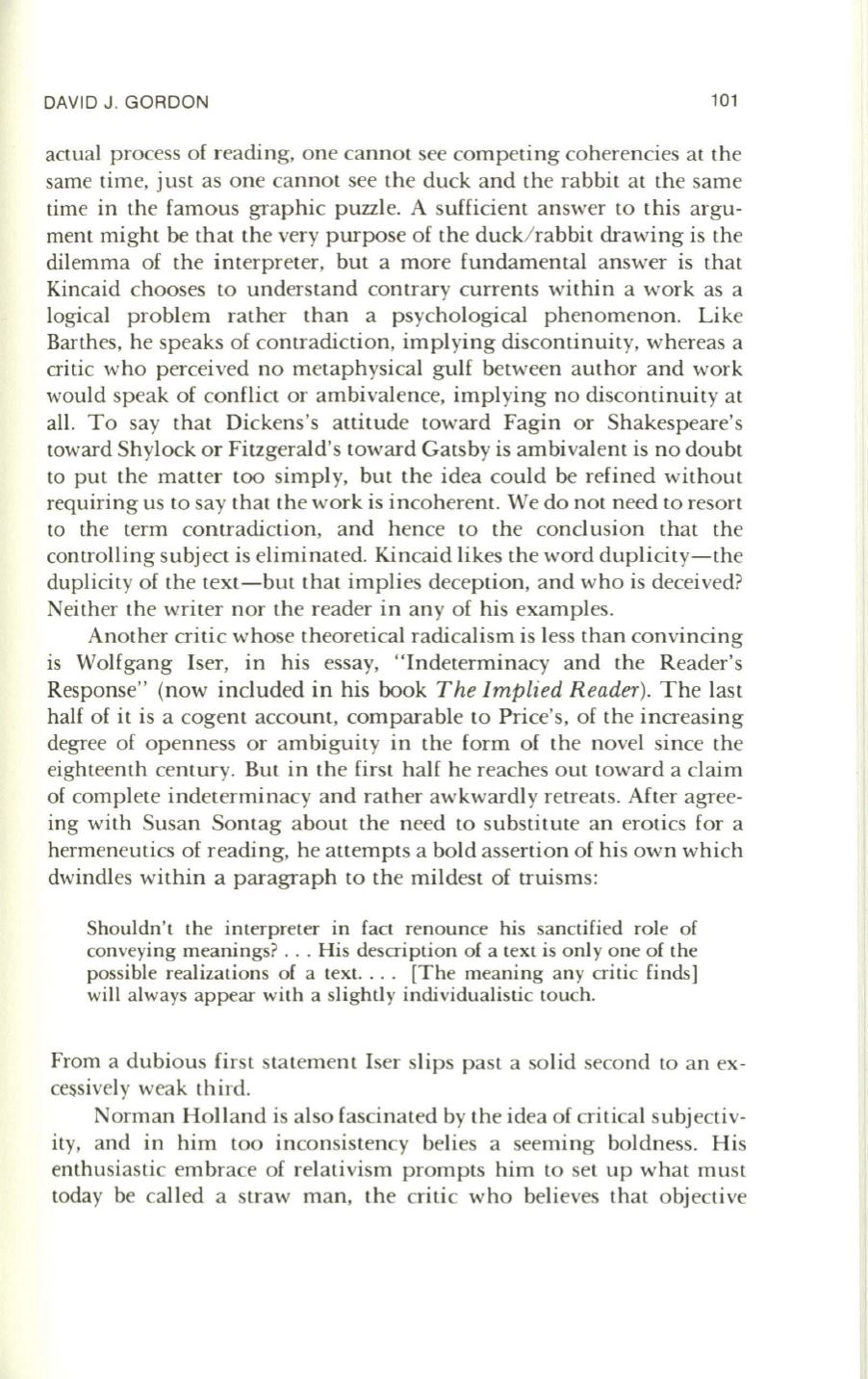
DAVID
J .
GORDON
101
actual process of reading, one cannot see competing coherencies at the
same time, just as one cannot see the duck and the rabbit at the same
time in the famous graphic puzzle. A sufficient answer to this argu–
ment might be that the very purpose of the duck/ rabbit drawing is the
dilemma of the interpreter, but a more fundamental answer is that
Kincaid chooses to understand contrary currents within a work as a
logical problem rather than a psychological phenomenon. Like
Barthes, he speaks of contradiction, implying discontinuity, whereas a
critic who perceived no metaphysical gulf between author and work
would speak of conflict or ambivalence, implying no discontinuity at
all. To say that Dickens's attitude toward Fagin or Shakespeare's
toward Shylock or Fitzgerald's toward Gatsby is ambivalent is no doubt
to put the matter too simply, but the idea could be refined without
requiring us to say that the work is incoherent. We do not need to resort
to the term contradiction, and hence to the concl usion that the
controlling subject is eliminated. Kincaid likes the word duplicity-the
duplicity of the text-but that implies deception, and who is deceived?
Neither the writer nor the reader in any of his examples.
Another critic whose theoretical radicalism is less than convincing
is Wolfgang Iser, in his essay, "Indeterminacy and the Reader's
Response" (now included in his book
The Implied Reader).
The last
half of it is a cogent account, comparable
to
Price's, of the increasing
degree of openness or ambiguity in the form of the novel since the
eighteenth century. But in the first half he reaches out toward a claim
of complete indeterminacy and rather awkwardly retreats. After agree–
ing with Susan Sontag about the need to substitute an erotics for a
hermeneutics of reading, he attempts a bold assertion of his own which
dwindles within a paragraph to the mildest of truisms:
Shouldn't the interpreter in fact renounce his sanctified role of
conveying meanings? . . . His description of a text is only one of the
possible realizations of a text. ... [The meaning any critic finds]
will always appear with a slightly individualistic touch.
From a dubious first statement Iser slips past a solid second to an ex–
cessively weak third.
Norman Holland is also fascinated by the idea of critical subjectiv–
ity, and in him too inconsistency belies a seeming boldness. His
enthusiastic embrace of relativism prompts him to set up what must
today be called a straw man, the critic who believes that objective


